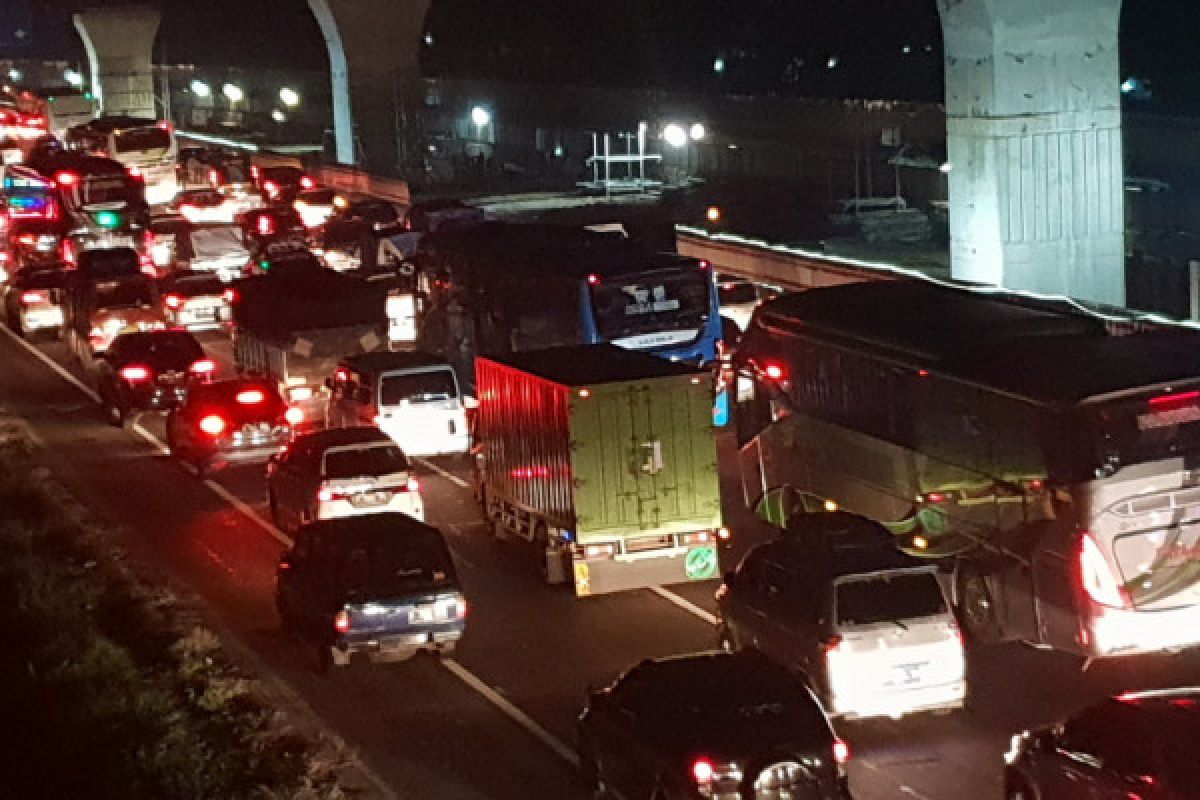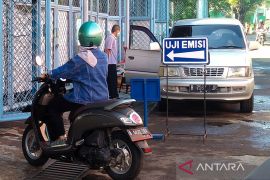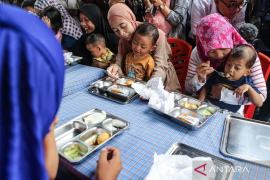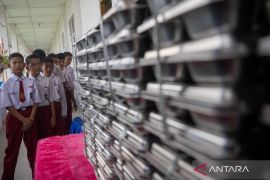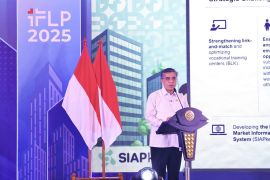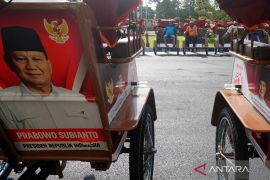Jasa Marga predicted that on Wednesday (June 13), two days before Lebaran, some 89,838 vehicles will leave Jakarta through the Cikampek Toll Road, adding the number to 563,083 vehicles that had passed the Cikampek turnpike since Wednesday last week.
Jasa Marga, through its official statement in Jakarta, on Wednesday, predicted that the number of vehicles was 89,838, or up 33.86 percent from the normal traffic volume of 67,121 vehicles.
The Cikampek Toll Road is the main lane for Lebaran travelers willing to celebrate the post-fasting festivities in Java, which hosts some 57 percent of the Indonesian population of over 237.6 million people.
The 563,083 vehicles that had left Jakarta until Tuesday via Toll Gate (GT) Cikarang Utama Jakarta-Cikampek Toll Road increased by 39.8 percent from the normal traffic volume of 402,672 vehicles.
Jasa Marga also recorded traffic distribution from GT Cikarang Utama to the North Line (via GT Palimanan and GT Cikampek) to reach 60 percent. In the meantime, vehicles traveling to the South (via GT Sadang and GT Cileunyi) reach 40 percent.
On Tuesday, or H-3 Lebaran, Jasa Marga recorded 104,690 vehicles to have left Jakarta via GT Cikarang Utama. The figure is up 55.99 percent from the normal traffic volume, which is 67,112 vehicles.
Although it is not as worse as in the previous year, traffic jams are still seen in certain points of the toll roads.
To date, the density of the Jakarta-Cikampek Toll Road is still monitored at certain parts of the entry point, especially in the rest areas and in bottleneck sections.
Jasa Marga, with police discretion, still enforces contra flow traffic designing from KM 35+600 to KM 61+500 of the Jakarta Cikampek toll road.
In addition, Jasa Marga, in cooperation with the police, also still imposes the open-close system in the toll road to divert the traffic flow to GT Cikarang Barat 3 to re-enter through GT Cikarang Barat 1 again.
On Tuesday, there was still a density at some point towards Cikampek.
"Traffic density is still occurring at some points, with average vehicle speed reaching 20 kilometers per hour to 30 kilometers per hour," Traffic Officer Hary Nugroho remarked at Bekasi on Wednesday.
Nugroho added that the density of traffic occurred on the Jatibening-Cikunir-Bekasi West and East Bekasi toll road-a KM 39 stop at Cikampek.
Traffic congestion also occurred in Cibitung to Toll Gate (GT) Cikarang Utama and Cibatu at KM 35 to KM 39. Traffic density took place from Karawang Barat KM 47 until after East Karawang, or KM 57 rest area.
"The number of vehicles has increased since (Tuesday) morning until Wednesday morning," Nugroho noted. Despite the density, Nugroho revealed that there was no total congestion on the traffic flow to Cikampek.
Jasa Marga predicts H-3 or Tuesday (June 12) to be the peak of the flow of Lebaran travelers, with the number of vehicles reaching 92,200 units.
In the meantime, the Ministry of Transportation has predicted that the use of private vehicles for homecoming ahead of Lebaran festivities was still quite high, which was at 12.24 million vehicles, or up 27.7 percent.
Head of Jabodetabek Transportation Management Agency (BPTJ) of the Ministry of Transportation, Bambang Prihartono, told FMB 9 that private car usage increased by about 16.7 percent and motor by 33.3 percent.
"The use of private vehicles is still quite high for easier accessibility reason. This is a challenge for mass transportation to be more creative," Prihartono revealed.
The prediction of total passengers using public transportation in the current 2018 homecoming exodus is 19.5 million, or up 5.17 percent compared to the previous year.
Prihartono explained that the increase of passengers by bus is still small, increasing 0.98 percent to 4.28 million people. Meanwhile, passengers using trains increased by 7.5 percent; those using ships increased by 2.7 percent; and those using aircraft increased by 8.47 percent.
With these predictions, the Ministry of Transportation has made public transportation capacity available for 42.88 million passengers during the current Lebaran festivities.
The prepared facilities consist of 49,613 units of buses, 207 units of roll-on-roll-off (ro-ro) ferries, 353 regular trains and 40 additional trains, 537 aircraft, and 1,293 ships, both provided by state-owned waterways transportation firm ASDP and state shipping lines PT Pelni.
The Ministry of Transportation has opened Lebaran 2018 Integrated Transportation Post in cooperation with all stakeholders, namely the Ministry of Public Works and People`s Housing, toll road firm Jasa Marga, Traffic Police Corps of the Indonesian National Police, and other stakeholders.
Reporter: Andi Abdussalam
Editor: Andi Abdussalam
Copyright © ANTARA 2018
